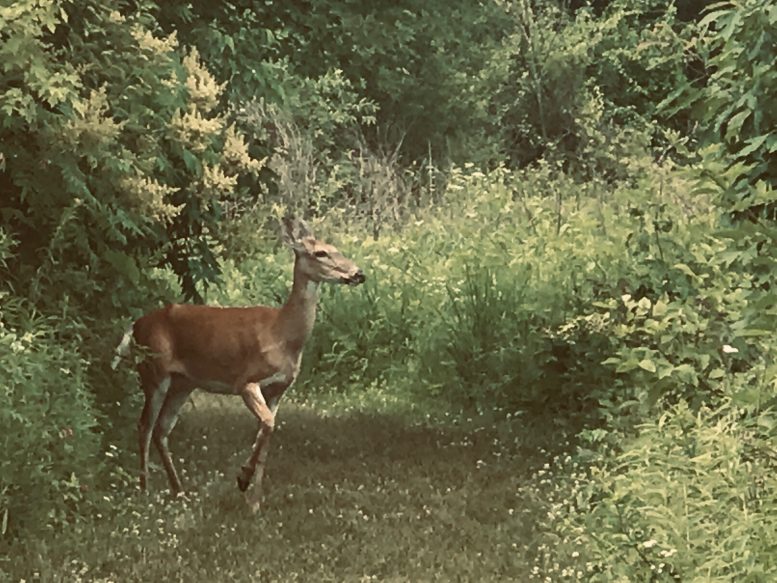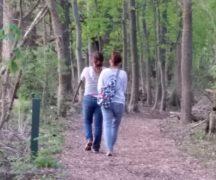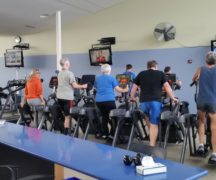By JAN LARSON McLAUGHLIN
BG Independent News
Many Bowling Green citizens find sanctuary in Wintergarden/St. John’s Nature Preserve. But the question is – how can the city keep it both wild and welcoming?
Approximately 35 residents gathered Monday evening to talk about how to preserve the park on the southwest edge of the city. The public forum was one of several being held by the Bowling Green Parks and Recreation Department as it plans for the future.
One of the challenges is to find common ground at the park. Some want a playground. Others want the park to remain a purely wild site. Some are tired of the flooding areas in the front of the park. Others want the wetlands preserved.
The citizens talked about their uses of the park with trails meandering through forests and prairie meadows.
Many use it for exercise – walking, running, cross country skiing. Some go there for glimpses of nature, including deer, birds, wildflowers, tadpoles and bats. The park provides the perfect backdrop for family photography and for geocaching. For some it’s a classroom for scout groups or budding naturalists.
And for some, Wintergarden provides an escape.
“I use it to get away from the rest of my life,” said Roger Mazzarella.
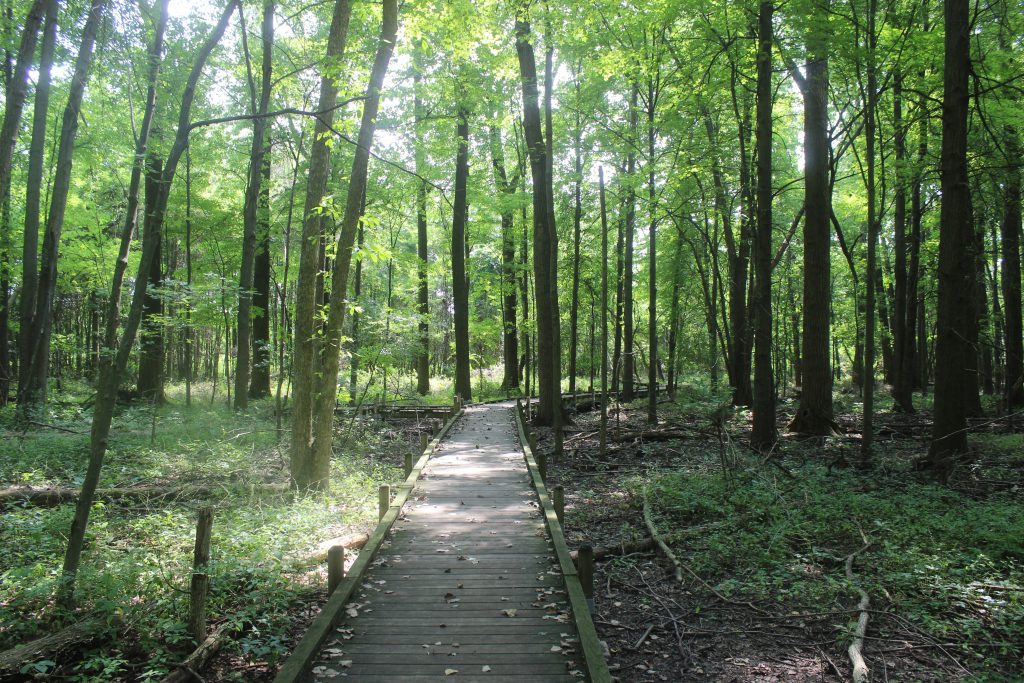
Citizens were also asked to imagine what Wintergarden might look like in 10 years.
“Things change rapidly,” said Dr. Shannon Orr, who is facilitating all the park forums. “Try to imagine what the future is going to look like.”
Some suggested additions of a treehouse village, expanded boardwalks, and increased bike activity.
Others wondered how technology in the park would allow for “citizen science.” While walking through the park, QR codes could help hikers identify plants and wildlife, and could share the history of the park.
Some envisioned the lodge being open more hours, and being a place to rent items like binoculars and cross country skis. In the winter, a hot chocolate vending machine would be great, one person offered.
Joyce Kepke suggested that a portion of the park be made more accessible to people with physical handicaps.
“I wouldn’t want to see the whole park that way. But it’s really impossible” for people with mobility issues to use the park now, Kepke said.
Park patrons identified the strengths of Wintergarden as wildlife within the city, the mulched trails that make it easier for walkers, a birdwatching station, the planned botany such as the meadows of lupine, and the diversity in one park of wetlands, forests and prairies.
“It’s forever wild,” said Martha Mazzarella.
Some appreciated the newer accommodations of restrooms and the renovated lodge.
The citizens went on to identify weaknesses of the park. Some worried about the same trails being used for multiple purposes – by walkers, runners, bikers, dog-walkers and skiiers.
Others talked about the need for more trail signage, possibly with updated information on trail lengths.
“Newcomers seem confused,” Kepke said.
“And yet, I’m begging to be lost,” Maria Simon said, sharing her use of the park as a refuge from the world.
Many city residents are unaware of the park’s existence, she added.
“A lot of people don’t know it’s tucked in there,” Simon said.
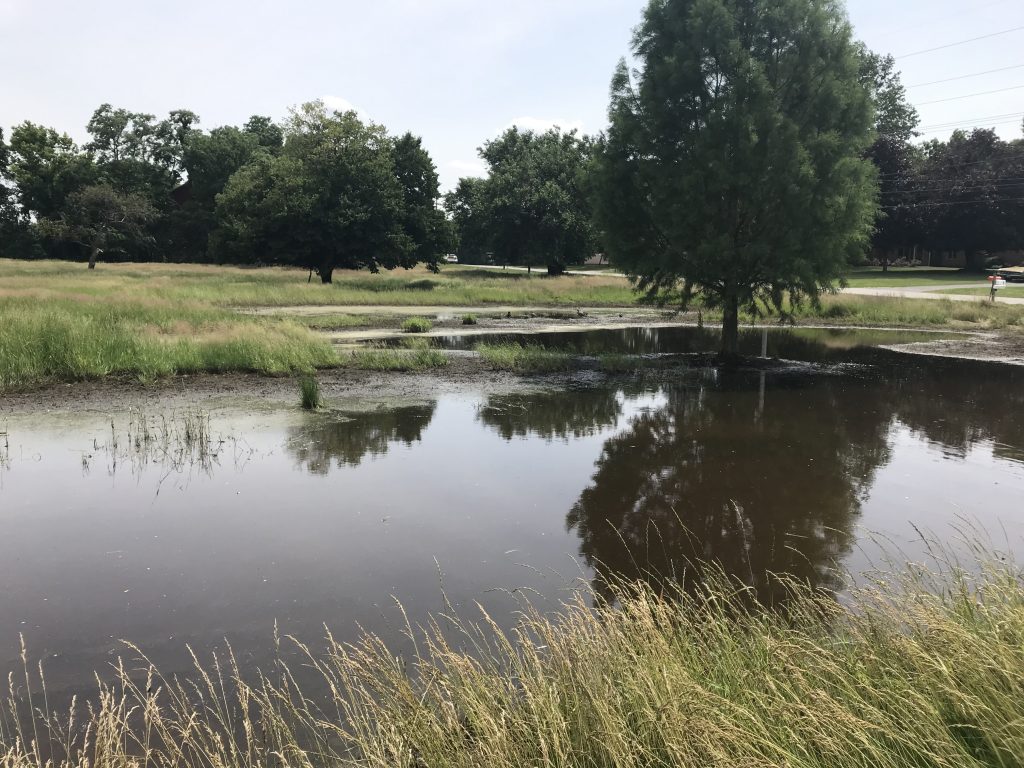
Some residents don’t like the flooding near the park entrance – and are annoyed by mosquitoes in the park.
Concerns were also listed about:
- Lack of play opportunities for children.
- Invasive plant species.
- Lack of staff and funding to have the nature center open on evenings and weekends.
- No emergency phone access.
- People who stray off trails.
Some stressed the need to keep Wintergarden as the city’s only wild park.
“It would be wonderful to be the best of all worlds for everyone,” Jan Bell said. “But this is a nature preserve.”
As for opportunities for the park, citizens suggested:
- A connection from Wintergarden Park to the Slippery Elm Trail.
- More educational programs on plant and flower identification.
- Activity signs for younger patrons, possibly offering a scavenger hunt or weekly challenges.
- Pictures to help “non-birders” identify the birds they see.
- More use of the lodge.
- More volunteer opportunities, such as picking up litter or pulling invasive plants.
- More weekend events.
- A livestream wildlife camera that could be viewed round the clock.
- Better integration of technology, possibly by using an App to help patrons alert others of places in the park where they just spotted certain wildlife.
- Reintroduction of additional rare species like lupines, and more swamp species for Monarch butterfly support.
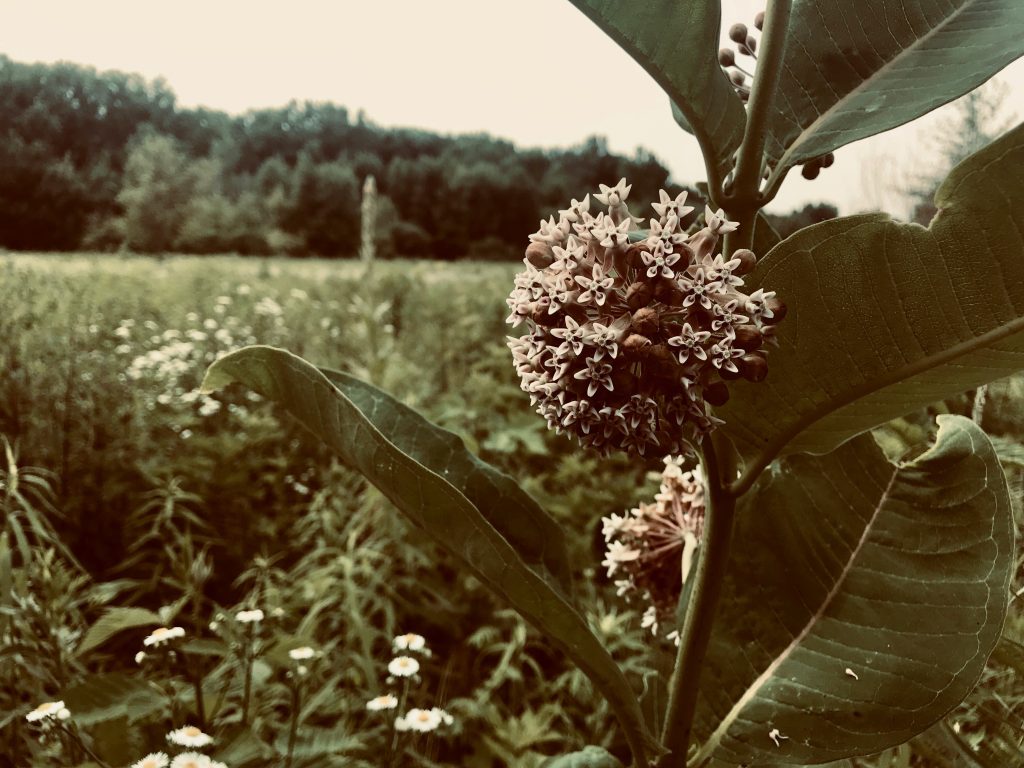
The group also discussed the 20 acres that the park will be acquiring, and how that might best be used. The land is the open field area directly south of the lodge.
Ideas ranged from more prairie, hiking trails, fishing pond, cross country skiing areas, and possibly a play area for children.
“Don’t get too fancy,” Frances Brent cautioned.
When asked to identify threats to the Wintergarden Park, the patrons listed:
- Decrease in birds and increase in feral cats.
- Overuse, especially if off-road biking increases a lot.
- Lack of play areas to encourage kids and families to visit.
- Climate change.
- Deer overpopulation.
- Unhealthy trees, many falling onto trails.
- Abusers of nature.
- Changes in political attitude at the city level, affecting financial support.
- New tree diseases.
- Failure of levy support by voters.
- Mosquito-borne illnesses.
- Ticks.
In response to the desire for longer staff hours in the park, Natural Resources Coordinator Chris Gajewicz said he and Natural Resources Specialist Cinda Stutzman are often available after hours for those who send messages on the park Facebook page.
“You’re not getting an answer at 2 in the morning about what owl you’re hearing,” he joked. But the staff will frequently respond to posted questions.
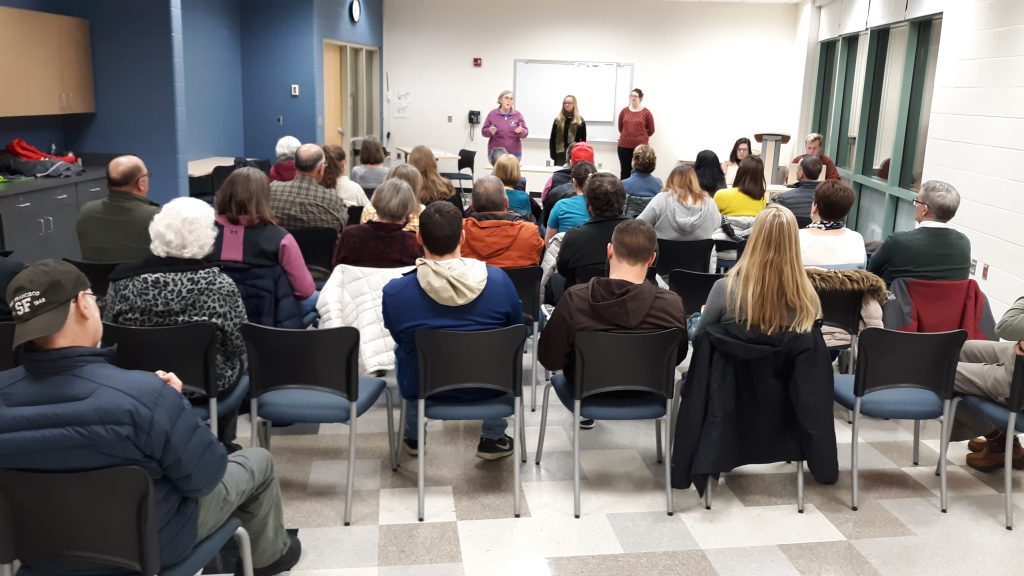
Parks and Recreation Director Kristin Otley thanked those attending for being passionate about Wintergarden.
“You all are avid users of the park,” she said.
Otley explained the activity in the front of the park, with drainage pipes being added in the area that often floods. “It looks like there are a lot of moles,” she said.
Anyone with further comments about Wintergarden/St. John’s Nature Preserve may contact Orr at skorr@bgsu.edu.

